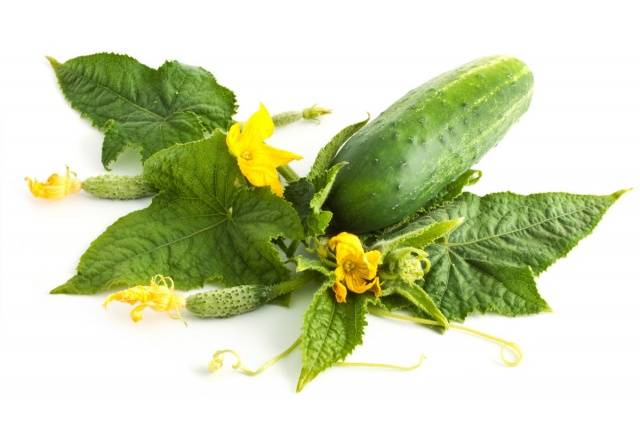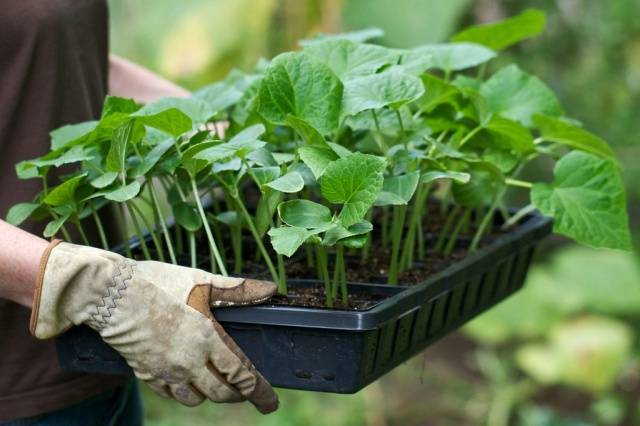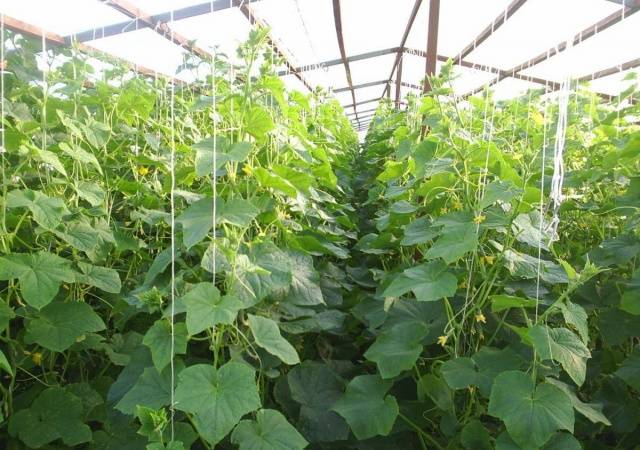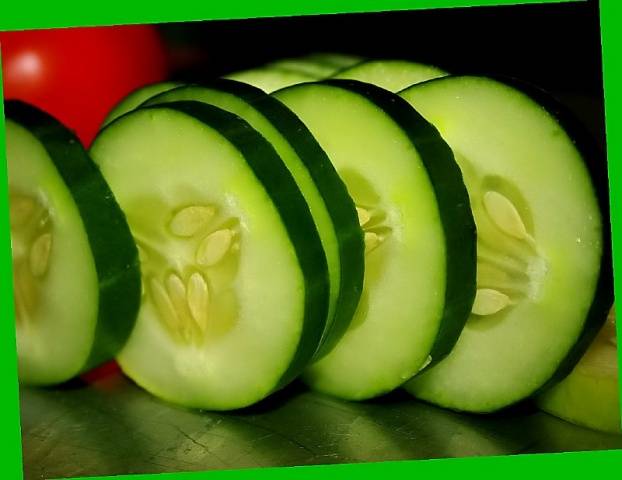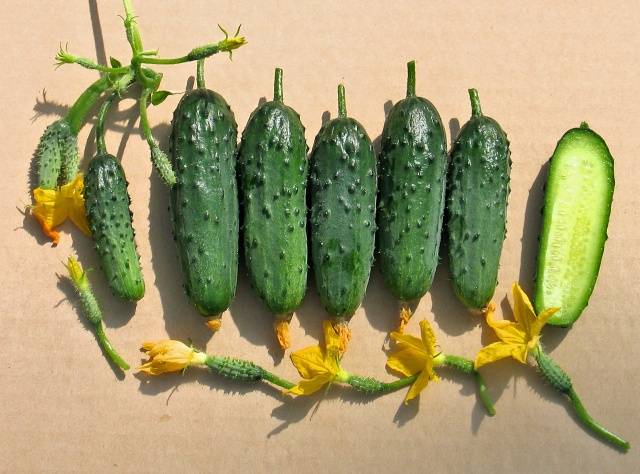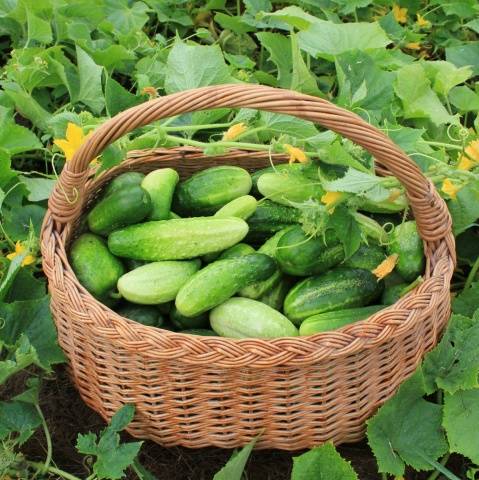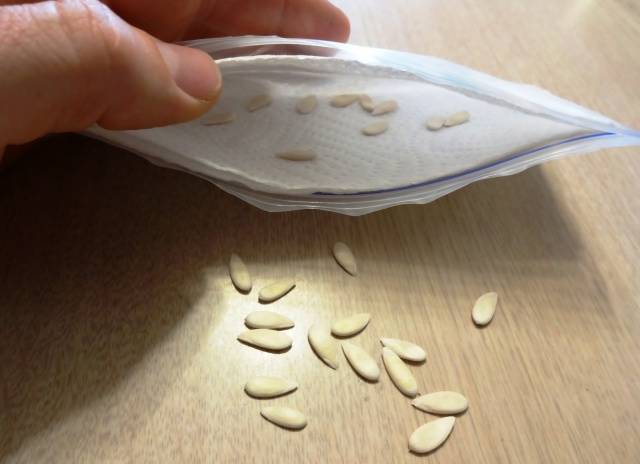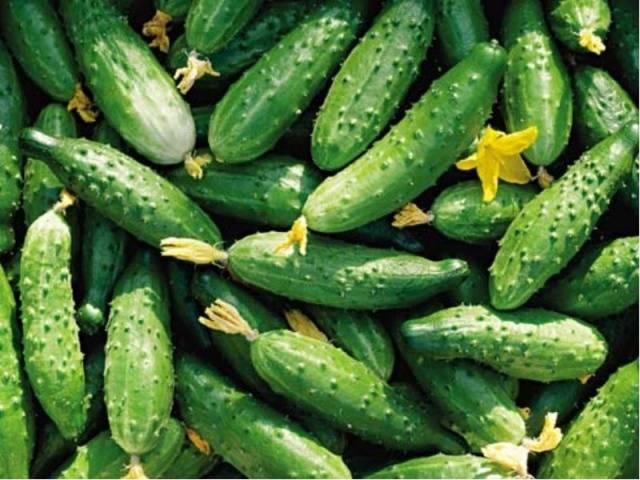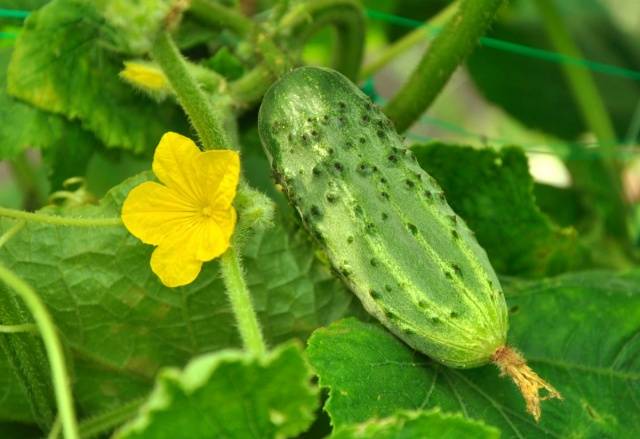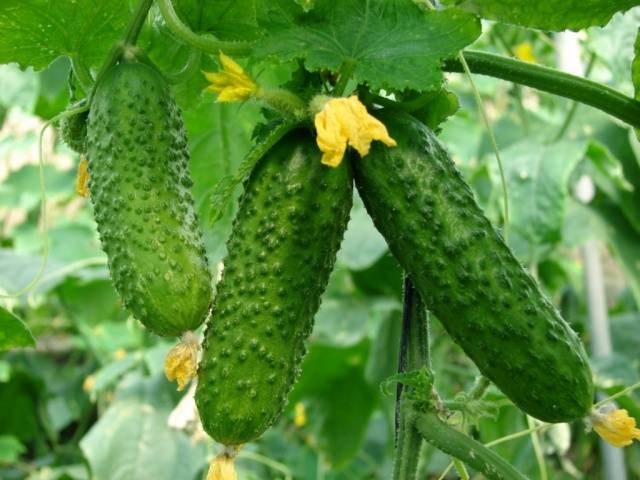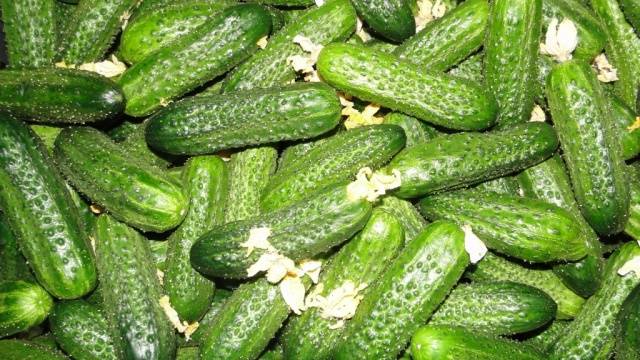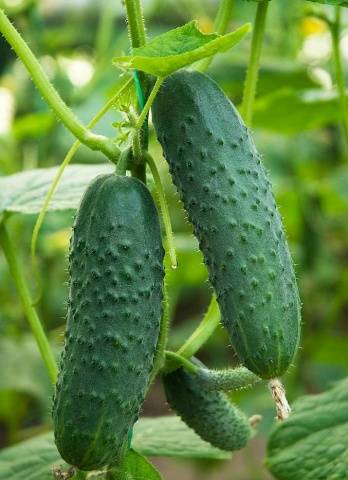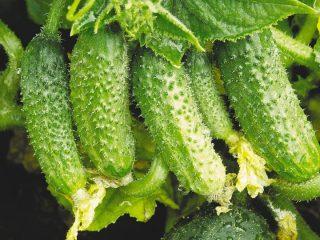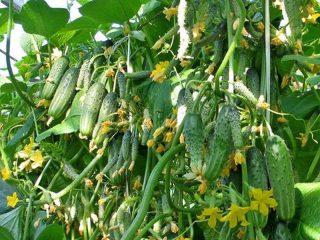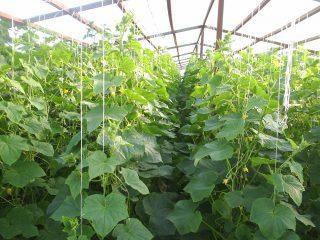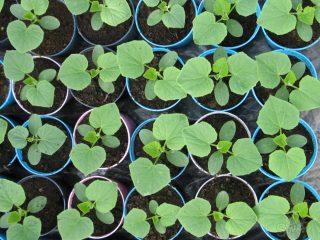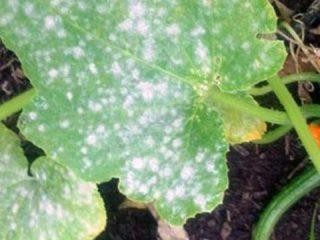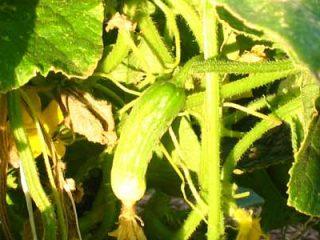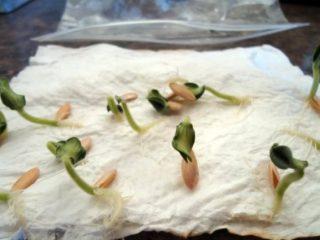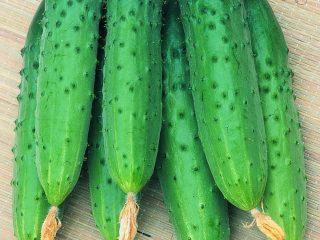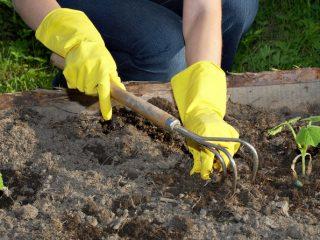Content
Cucumber is the first fresh vegetable after a long winter. It appears on the shelves of markets and shops earlier than others, and is the first to begin to bear fruit in dachas and vegetable gardens. Of course, you want to get ripe fruits as quickly as possible, which is why breeders are working on developing early varieties of cucumber. The earliest vegetables are saturated with the same nutrients and microelements as other varieties, and such cucumbers begin to bear fruit one to two weeks earlier than others.
How to grow cucumbers before anyone else
Especially for those who like to enjoy fresh vegetables from their own garden beds, breeders have developed early-ripening varieties of cucumbers. In general, all cucumbers are divided into several types according to the speed of ripening:
- super early - bear the first fruits already 33-40 days after planting;
- early ripening varieties have a growing season of no more than 45 days;
- mid-ripening - ripen in 45-50 days;
- Late-ripening cucumbers will appear on the bushes only by the 55th day after planting the seeds in the ground.
So, in order to quickly harvest the first harvest from the bushes, you need to choose super early and early ripening cucumber varieties.
What rules must be followed
The owner must understand that each type of cucumber has its own purpose. Thus, super-early varieties and hybrids are most often grown in greenhouses. As a result of selection, the seeds of such plants, of course, receive the necessary hardening, which helps them cope with day and night temperatures, spring frosts and other troubles. And yet even the most hardened super early cucumbers will not be able to withstand the climatic conditions of the northern and central regions of Russia.
Therefore, when buying seeds, the situation needs to be assessed holistically: answer the following questions:
- What are these cucumbers needed for (for salad, to satisfy the first need for vitamins, for preservation)?
- Is it possible to protect the bushes from frost (greenhouse, temporary greenhouses, just a covering film)?
- What is the average temperature in this region at a certain time of year (does frost occur, is the air temperature very different between day and night)?
If you need a variety in order to get several kilograms of early cucumbers (until the middle ones grow) and eat them fresh, then super early varieties and hybrids will be very useful. Especially if it is possible to shelter them from the cold, and the site is located on the south side in a warm region.
Early varieties can be used for preservation and marinades, but this is impractical. It is better to use mid-ripening and late-ripening cucumbers for these purposes.
Features of early cucumbers
Early cucumbers are selected varieties and hybrids that scientists have worked on. The seeds of these cucumbers, like the plants themselves, have a number of features:
- seeds undergo serious hardening at low temperatures;
- they are more resistant to diseases;
- early varieties are less demanding of the sun and heat - for normal growth they only need partial shade and the absence of frost;
- most of the early varieties belong to parthenocarpic and self-pollinating species, but there are also bee-pollinated cucumbers for planting in open ground;
- It is more effective to plant early cucumbers in greenhouses (do this at the end of February or beginning of March);
- Such cucumbers are planted in the ground depending on the climate - more often, in the third ten days of May;
- early varieties are never bitter (breeders removed bitterness from cucumbers at the same time as hardening);
- Almost all early ripe cucumbers are best consumed fresh (they are juicy, with thin skin and tender flesh).
Variety or hybrid
Having decided on the ripening time and characteristics of early-ripening cucumbers, the gardener is faced with another problem - which cucumbers are better, varietal or hybrid.
There is no clear answer to this question, both species are characterized by high productivity, resistance to disease and high humidity. So what's the difference, and which cucumbers are better?
A variety is varieties of the same species crossed by breeders. The main condition for such selection is the transfer to the “descendant” of all the qualities and characteristics of the “ancestors”. We can say that this is natural reproduction with some adjustments made by scientists. Varietal cucumbers can be modified independently by transferring pollen from one type of plant to another.Only from these varietal cucumbers can seeds be collected for subsequent cultivation - they completely retain the characteristics of the previous plant.
Hybrid seeds can be easily identified by the “F1” marking next to the variety name. This code means that the cucumber has predominantly female flowers, and inside the package there are seeds of a first-generation hybrid (number 1). Hybrids are obtained by repeatedly crossing several types of cucumbers. This process is quite long - from three to ten years. Every year, the resulting seeds are crossed again, achieving optimal cucumber qualities. The best characteristics of the variety are left, getting rid of shortcomings and weaknesses.
Buying seeds of early ripe cucumbers
Having decided on all the nuances, you can move on to choosing suitable varieties and hybrids. The difference between super-early and early-ripening cucumbers is several days in ripening time. This limit is very arbitrary; exact time frames can only be discussed under conditions of greenhouse cultivation of cucumbers at stable temperature, light and humidity.
Therefore, below is a joint list of the best early-ripening and super-early cucumbers.
"Vanguard"
An early-ripening cucumber with high yield (up to 4 kg per square meter), suitable for planting in open ground and for greenhouse cultivation. The fruits are medium in size - 10-16 cm, have excellent taste, and can be eaten fresh or canned with equal success.
Cucumbers can be planted in the ground only after there is a threat of frost, when the ground warms up to 10-12 degrees. The bushes of this variety are branched with large green leaves. The first greens will appear 36-38 days after planting. It should be borne in mind that “Avangard” is a bee-pollinated variety.
"Augustine"
One of the most common varieties of early ripening cucumbers in Russia is “Augustine”. It gives a good harvest - up to 440 centners per hectare of land, which makes it possible to successfully grow this variety for sale. It can be planted both in a greenhouse and in open ground - the cucumber does not need pollination, it is classified as perthenocarpic.
The fruits are small (10-16 cm) with large tubercles, they have absolutely no bitterness. It can be used both for pickling and salads. "Augustine" is resistant to one of the main enemies of cucumbers - powdery mildew. And you can see it in the photo below.
"Ajax F1"
A representative of early ripening varieties, the Ajax F1 hybrid is simply created for growing in open ground. With this approach, the first cucumbers can be obtained already on the 40th day after planting.
Ajax needs insects for pollination because it is a bee-pollinated hybrid. With good pollination, the owner can get up to 10 kg of cucumbers per square meter of land. Small cucumbers (from 6 to 12 cm) are great for both pickling and salads.
The owner of the plot must take into account that for high-quality fruiting, the Ajax F1 hybrid needs timely watering, loosening the soil and fertilizing. Photos of Ajax can be seen below.
"Courage F1"
The parthenocarpic hybrid "Courage F1" has predominantly female flowers, so its yield is very high - up to 8.5 kg. The cucumbers are “decorated” with many tubercles and white spines, the flesh of the fruit is aromatic and crispy.Such early ripe cucumbers are suitable for pickling, salad, and marinade.
Resistant to most diseases, "Courage F1" is planted only in open ground at the end of April or beginning of May. It is important to take into account the temperature of the earth, it should be above 10 degrees.
"Artist F1"
Another early ripening hybrid is “Artist F1”. Parthenocarpic species with predominantly female inflorescences.
On the 38th day after planting in greenhouse soil, it produces its first fruits - small cucumbers weighing up to 100 grams. “Artist F1” can also be planted in open ground, only in this case the harvest will appear later – on the 50th day after planting. Cucumbers are juicy and crispy, without bitterness, and are used for preservation and salads.
“Artist” bushes are medium-sized, resistant to cold and many diseases. Hybrid seeds should be sown in May. You can see the cucumber in this photo.
Expert opinion
There is no need to choose early varieties of cucumbers when you just want to quickly enjoy the first vegetable. For such a decision there must be reasons: a suitable climate, covering material, a southern site with dry soil.
Early ripening varieties alone will not be able to provide a gardener’s family with a harvest for the entire summer. It is best to plant several types of cucumbers in one area: use the early ones for the first salads and okroshkas, and pickle the middle and late ones for the winter. So, the owner will be able to enjoy fresh cucumbers all season – from May to October.
